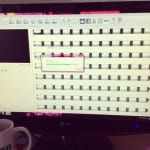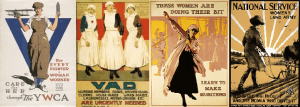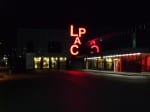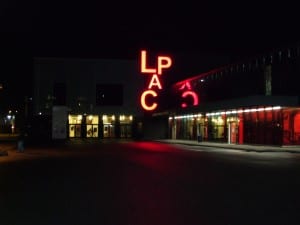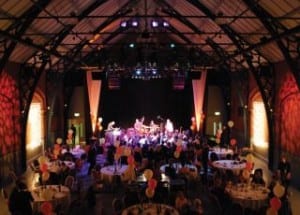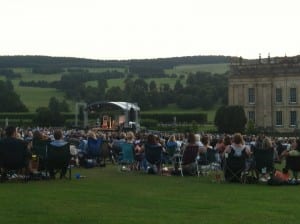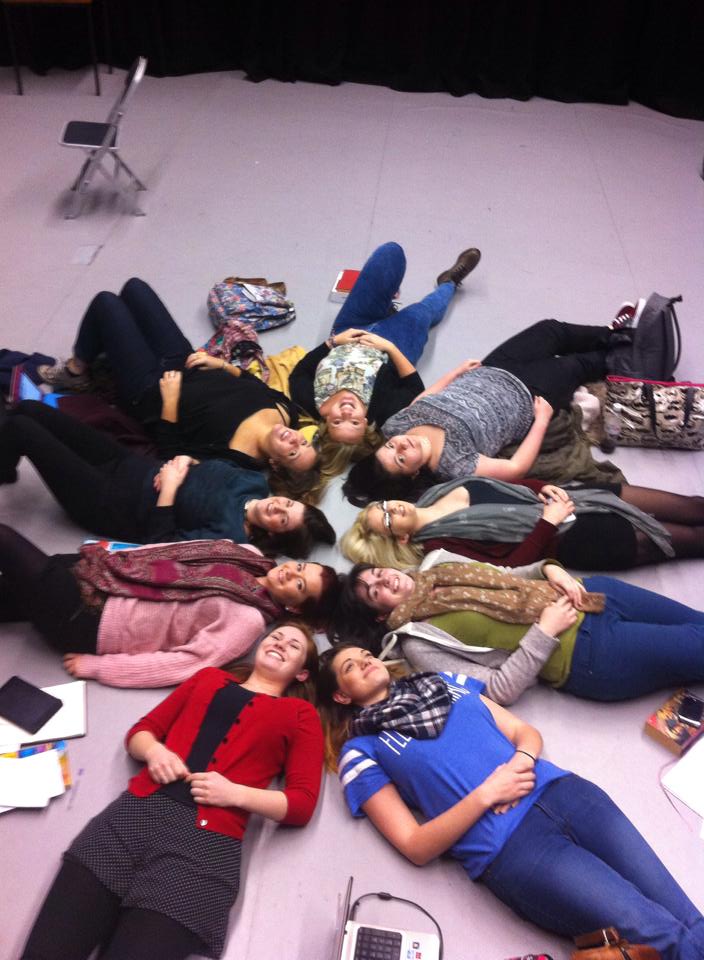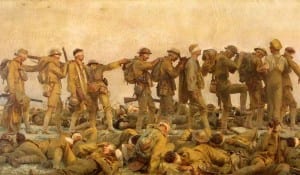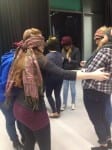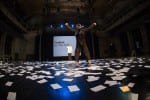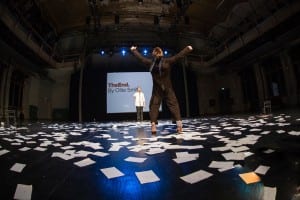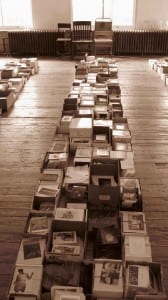Category Archives: Picture
Women in WW1 and Our Performance
We, as a company, have now established that our performance will be about the women of WWI. In order for us to follow through with our manifesto and ideas as a company, a lot of research will be required. As the company’s dramaturg it is my job to not only research as well as the other birds but to double check whether the material is appropriate for our performance. By this I mean, historically and conceptually appropriate.
It would seem ideal then for us to start with the roles women took on when the war came about. Many women did work before the war began, however, this was the first time where there was mass employment for all women. Half a million women worked for the first time during the war as well as over one million volunteers (BBC, 2014). Much of the work undertaken by women, over 600,000, during this time were roles that had previously been dominated by males especially those within industry (Brosnan, 2014).
Women’s took up jobs in policing, working the land, public transport, the post office, nursing, factories, the Armed services, the Government positions, clerks in businesses and many other. Many women went to work in the munitions factories, a job that was highly dangerous. The munitionettes produced 80% of the weapons and shells for the British Army and were exposed daily to the poisonous substances without strict safety measures (Martin, 2009). They became known as the ‘canary girls’ due to the yellowing of their skin dealing with sulphur contained within the shells (ibid).
With the knowledge of the munitionettes, we decided that this would be a part of our performance somehow, We wanted to show that not only were the men fighting on the front line were risking their lives for their country but also women back home were also risking their lives to support their boys and war effort. We began to develop a choreographed sequence to show the monotony of the factory work, the character of these brave women and the demand for the front line. Below is some of the improvisation we did, to start developing the scene:
Another way in which we are portraying the women in WWI in our piece is through the use of verbatim inspired by Dan Canham and Stillhouse’s performance Ours Was the Fen Country. Both Lauren Simpson and Louise have researched their family’s involvement in the war. Both have interviewed relatives and discovered more articles that we can potentially use in the performance. We are hoping that we can use their interviews as part of the verbatim as both talk of women in different areas of work including the cotton mills and munition factories and also working as a butler. We don’t wish to act these people’s voices but we want to transpire these voices through us to the audience as Dan Canham explains”…we’ve been playing a lot with people’s voices almost as if they’re not with us, so placing people’s voices in little speakers or having their voices disembodies, what it means to embody their voices, almost as if we’re kind of bringing them into the room making them visible, making them embodied because they’re not with us literally” (Stillhouse, 2013).
We are also going to, hopefully, use the letters we have found at the Museum of Lincolnshire Life and the Lincolnshire Archives from Billy Lounds and Harry Butt. We have researched both Dora and Alice, the two recipients of their letters, and have found some details about them. However, again we do not want to act as these women reading these letters as we don’t know who these women were or what they were thinking when they did receive the letters. In order for us to use these letters, we will have to negotiate a way in which to speak these letters without fabrication.
Works Cited:
. BBC (2014) iWonder: What Did World War One Really Do For Women? [online] London:BBC. Available from: http://www.bbc.co.uk/guides/z9bf9j6. [Accessed February 2014].
.Brosnan, M. (2014) The Women War Workers of the North West. [online] London: IWM. Available from: http://www.iwm.org.uk/history/the-women-war-workers-of-the-north-west. [Accesssed 10th February 2014].
Imperial War Museum (2014) Women’s Services in the First World War. [online] London: IWM. Available from: http://www.iwm.org.uk/history/womens-services-in-the-first-world-war. [Accessed 10th February 2014].
.Martin, S. (2009) Women and WWI- Women in the Workforce: Temporary Men. [online] Available from: http://www.firstworldwar.com/features/womenww1_four.htm [Accessed 10th February 2014].
Stillhouse (2013) Ours Was The Fen Country- Research and Development, May 2012. [podcast] 2013. Available from: http://vimeo.com/45147781. [Accessed 20th February 2014].
Marketing, what is popular performance?
First to talk was Simon from Lincoln Drill Hall, he mentioned that their mission statement is to make ‘special moments’, that ‘art makes lives better’ and that they offer a ‘bucketful’ of experiences. The main importance is the accessibility of space, he gave an example of performances that are expensive but the reputation and accessibility of the show sold itself. These challenging performances that push boundaries have become incredibly popular, and this questions what we know about popular performance. Popularity is about ‘getting people through the door’ and The Drill Hall is already a Lincoln landmark so a lot of people don’t really see it as a traditional theatre venue like The Lincoln Theatre Royal. They even hold election night there and Simon even sees it as a ‘performance space’. He mentioned that there are three programmes available when it comes to performance: Challenging, Core and Popular Culture. Popular Culture is not about low production costs and values but it is about performance accessibility and its relevance. Simon asks questions about the audiences, ‘why would people be tempted to attend?’ and ‘what kind of experience do people have?’ However, he also mentions that the three programmes that are listed above are actually becoming fluid this also challenges about what can also be popular. It also pushes the boundaries of what the building is capable of and it is also a very versatile space. It is their responsibility to make high quality work popular and it seems that there is a complex relationship between the commercial and the popular.
Richard and Laura spoke on behalf of Chapterhouse . They mentioned that they don’t get funding so performances have to make money therefore, they can’t do experimental work. The company performs in venues that want and need to bring people in e.g. stately homes, gardens, National Trust, Heritage sites, so it has to sell. The performance will usually be one of the busiest days the venue will have. After being asked what he thought of popular performance, Richard sees it as a ‘responsibility for himself and for the venue’. He mentioned that Shakespeare is a harder sell than it used to be so now the company have moved towards staging classics like Jane Austen and Charles Dickens. This creates a nostalgia where they use things that people recognise but it is always vital to have an innovative take on the text. With Laura writing the company she wants to create nostalgia, with modern interpretations, creating existing plays within a nostalgic format that the audience recognise, but it is innovative within that format. She also has a feminist agenda, Chapterhouse has become Event theatre, an entire entertainment package and she notices that the majority of people who go to these performances are women, so they need to give the audience what they want.
The LPAC has the problem of being a presenting venue when it comes to discussing what is popular, so is it about how we present the work we offer? They have less control over the productions that are put on so balancing the programme is always tasking as it is how the LPAC is perceived and received. We need to start to think about different forms of popular for different audiences, as there are so many different popular avenues of performance.
The talk was incredibly insightful to understand that popular performance is so hard to define, it shifts and changes like the indecisive Lincolnshire weather. This is what we need to be careful of when marketing our piece, we need to understand the audience in order to market the audience.
Works Cited
Byrnes, W.J. (2009) Management and the Arts. 4th Ed. Focal Press: USA.
The Drill Hall (2011) [image] http://www.lincolndrillhall.com/events/lincoln-drill-hall-s-third-annual-bangers-mash-ball [Accessed: 16/05/2014].
T, Howes (2013) Chapterhouse at Chatsworth. [image] http://tamaraausten77.blogspot.co.uk/2013/08/pride-prejudice-at-chatsworth-house-my.html [Accessed 16/05/2014].
Through Speaking, We Learn.
As a company we have been lucky enough to have the opportunity to speak to working practitioners within the industry. We have been able to ask them about their companies and experiences in building a company and making art. As a new company this has been very helpful as we have learnt what to do and, in some cases, how to steer away from problematic issues.
Dan Canham from Still House came to speak to us about the process and production of Ours Was The Fen Country . The production focused on verbatim text and he discussed his process of gathering the interviews and sifting through hours of dialogue to pick out the most interesting points. our experience will be very similar to his as we will be interviewing a wide rage of people about their stories of World War 1. Still House’s production was more than just verbatim text and one aspect of creating our show that concerned me was getting from spoken word to a performative state. Canham’s advice was to play and to avoid worrying about the final outcome of the show. ‘It will happen’ he told us. Continue reading
Finding Our Pebble…
Something Ollie Smith said in the post-show discussion of The Trilogy (2013) hit home with me. “You start with your pebble and you toss it in the lake and watch it ripple”. The pebble represents your initial idea and the ripples are continuations of that idea that spread and develop. This analogy calmed my initial nerves about creating a fully developed and functioning theatre company from scratch. We just needed to find our pebble!
With this mind-set, we began our first meeting. Simply throwing around our own preliminary ideas showed that we were all having similar ideas, which is a huge advantage with such a big group of people. We wanted to create something of our own and as 2014 is the beginning of the centenary of World War One, this is the topic that seemed most appropriate.
There is so much existing material regarding World War One that the script wouldn’t need to be totally devised. We want to take extracts from poems, novels, plays and newspaper articles and incorporate them with our own words to create a performance. We also like the idea of using real people’s voices throughout, to give an element of truth. This combining of extracts from multiple sources reflects altermodernist Nicolas Bourriaud’s ‘postproduction’. He states that: “artists today program forms more than they compose them; rather than transfigure a raw element…they remix available forms and make use of data” (Bourriaud 2005, p. 18). He draws a parallel between this and the work of a disc-jockey (DJ). A DJ doesn’t use original music, but collects them from other sources. The remixing of the music creates a new way of listening to the songs. This is the technique that we want to adopt when creating our piece.
Our initial rehearsals are well and truly underway and we have dived head first into the research and development stage. As we are right at the beginning of our devising process, we are simply playing. Just as children would when given a large space, we have been dancing, singing and playing games. However, this is not all in vain.
The songs we have been learning have been from World War One, as have the dances. The foxtrot and the castle walk are the first two that we have attempted. Having the freedom to play without the pressure of creating ideas seems to allow ideas to happen more regularly. Simply from a dancing workshop, we created the idea of having no men present and just representing them by dancing with a jacket or a hat, for example. This is a beautiful idea to come at such an early stage in the process.
Games have also proven to be useful in channelling our thoughts and ideas. For example, we were inspired by a picture of blindfolded men leading each other through the trenches.
We wanted to create a similar feeling and so we blindfolded ourselves and then set a task for us to complete. One of which involved us having to get in height order without any form of verbal communication. We just about managed it, but it proved a difficult task.
- Simpson, L. (2014) Feeling who your’e near
- Simpson, L. (2014) Clinging on for dear life
These early ideas are exciting as we have no idea if they are going to make it into the show or not at this stage. Watch this space!
Works Cited:
Bourriaud, Nicolas, Schneider, Caroline, Herman, Jeanine (2005) Postproduction: Culture as Screenplay: How Art Reprograms the World, New York: Lukas & Sternberg.
Simpson, L. (2014) Birds Eye View of the Company.
Singer Sargant, John. (1919) Gassed, Accessed from: http://conflicts2.wikispaces.com/WWI+Art+Gallery [online] [12/02/14].
Smith, Ollie (2014) The Triology Post Show Discussion: Thursday 30th January 2014.
The Grand Day Out
“To start with it’s the script and by the end it’s the set.”
After watching Michael Pinchbeck’s, The Trilogy at the Lincoln Performing Arts Centre on Thursday 30th January, I related The End to our process the most. The performance was inspired by one line of stage direction found in William Shakespeare’s The Winter’s Tale, which was “Exit pursued by a bear”.
Pinchbeck 2011
As Michael Pinchbeck states in this video:
“We have these cards, which contains the text, which we drop. So to start with it’s the script and by the end it’s the set” (2011 online).
This is how I believe our theatre company’s performance will be fabricated. After discussing what our performance theme would be, we decided to base it on war as this year it is The First World War Centenary. Due to our highly factual and unmistakably emotional topic we were incredibly fascinated by having recorded interviews, photos, music anything that could make the performance feel real and use it as our set. Whether it was used as a projection, printed photographs or a montage of sound it would all accumulate together to become our set.
This process reminds me of an art installation called A Book About Death, it’s not the content that I can reflect upon but I can with the process. Artists were invited to contribute a 500 postcards to create an unbound book. 486 artists responded to the request and A Book About Death was installed at The Emily Harvey Gallery in New York city on September 10, 2009. These small images were installed on a white wall while the remaining postcards were in large boxes on the gallery floor and visitors to create their own version of the unbound book. It reveals how we have no idea what we are going to get from researching this project and how our final performance can be ideas taken from any little fact we uncover or a moment we enjoyed in devising.
Our next step is to research into Lincoln’s involvement during the war, we will be visiting The Museum of Lincolnshire Life tomorrow, where they have an authentic World War One tank.
Works cited:
The Book About Death (2009) [image] http://4.bp.blogspot.com/_SAUcA31atjA/SqpTGdO2RgI/AAAAAAAADcE/vNJ29ZIKsj8/s1600/Install.1.jpg [Accessed 31/05/2014].
The End (2011) http://www.youtube.com/watch?v=xOEJVxc-qBg [Accessed on 3/2/2014].
The End (2013) [image] http://michaelpinchbeck.co.uk/the-end/ [Accessed on 3/2/2014].
